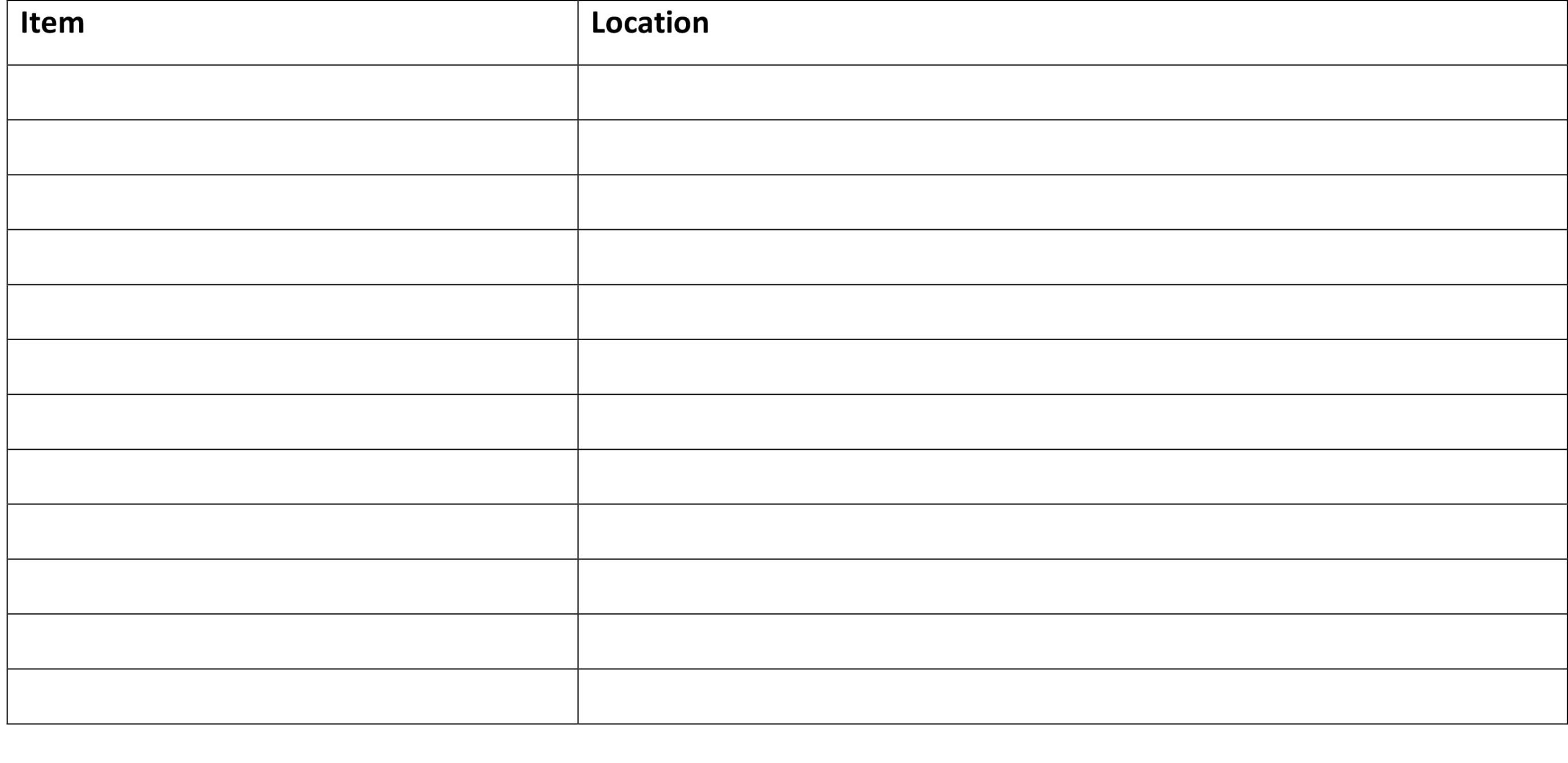Grab List
Grab lists are used to help you focus on the most important items you would need to grab in the event of an evacuation. In addition to items that are irreplaceable, you should also make sure to take items with you that help you maintain your wellbeing.
When creating your grab list think about the following:
- What are some items that you could think of right now that you’d want to take with you in the event of an evacuation? Be sure to consider items that are important to you that may be irreplaceable.
- What items do you need to maintain your wellbeing? Are there medications, supplies, etc. that you need to take with you?
- What are some key items that you would want to be prepared with that would help you maintain your lifelines?
- Write down your grab list below – and consider including both the item, and it’s location in your home on your list.

